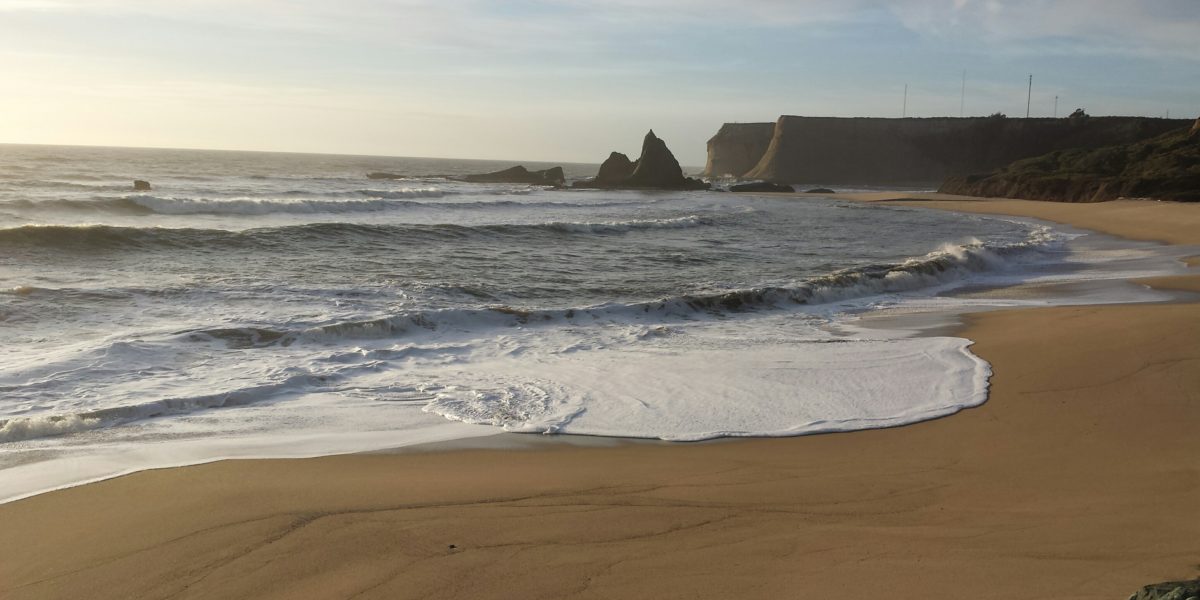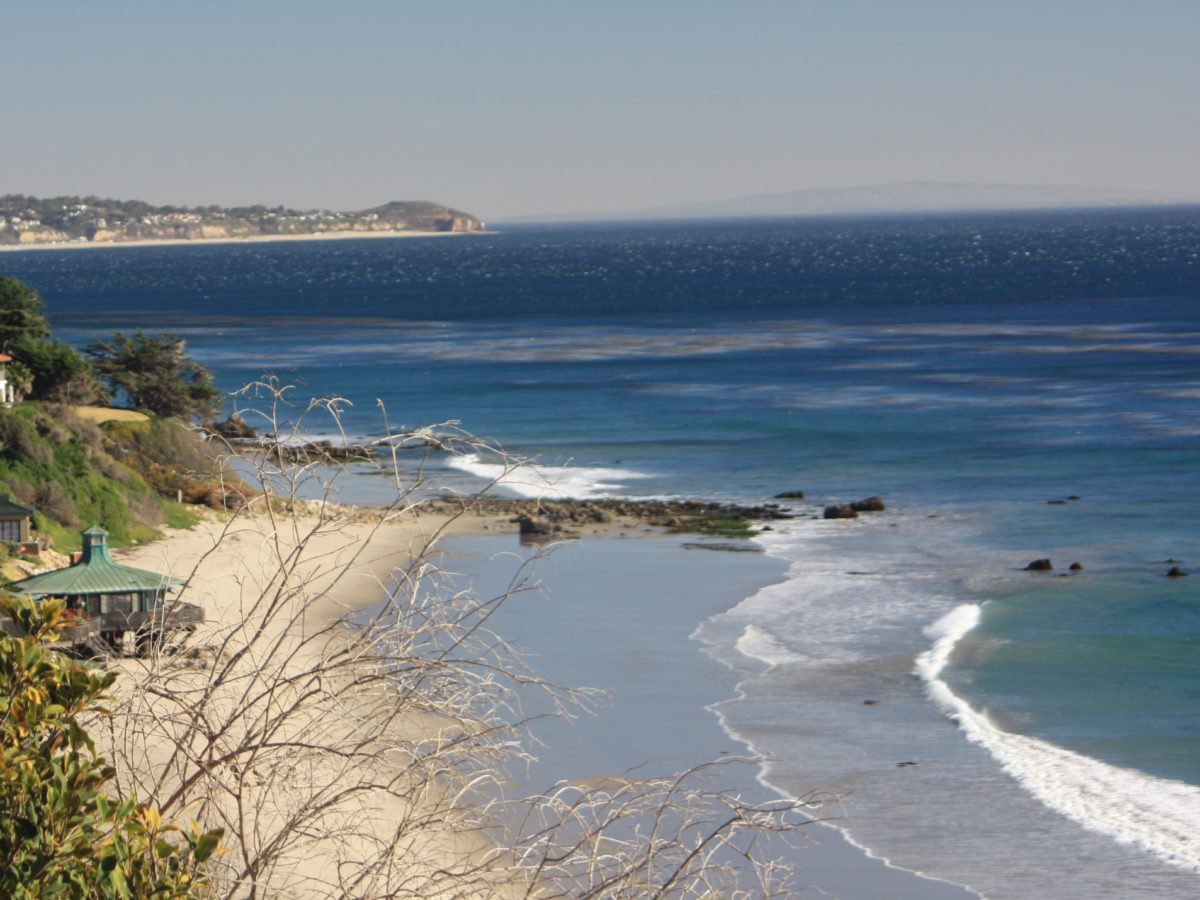
California Has Won Its Fight for Public Access to Beaches. Well, Almost.
After a drawn-out battle, the beach at Opal Cliffs is publicly accessible. But along the California coast, three holdouts are still fighting to keep their sands off-limits to surfers and sun-seekers

By Memorial Day 2019—just in time for sun-seeking weekenders—the epic battle over who can access an exclusive beach in Capitola, California, will draw to a close.
The beach should never have been exclusive, per the 1976 California Coastal Act, which mandated that beachgoers have “maximum access” to all 840 miles of California’s coastline. But according to the San Francisco Chronicle, since the mid-’80s, the Opal Cliffs Recreation District has restricted access with fences, gates, razor wire, security guards, and key cards. After a protracted battle last year, a settlement was reached to open the fence during daytime hours so that any beachgoer could access the no longer aptly named Privates Beach without paying for a keycard.
The Opal Cliffs debacle is only the most recent settlement enforcing the California Coastal Act. The public right to enjoy California’s beaches has sparked years-long legal wars between wealthy landowners and the California Coastal Commission, the state agency tasked with regulating coastal land usage and access. In one infamous situation, Dreamworks founder David Geffen spent 22 years and hundreds of thousands of dollars fighting to keep Carbon Beach, next to his home in Malibu, private.
Three noted beaches, however, still remain inaccessible and at the heart of legal struggles: Martin’s Beach, El Sol Beach, and Hollister Ranch. Though all California beaches are accessible up to the “mean high tide line,” which changes per the tide, the problem with these beaches is reaching them. Private landownership often makes access roads off-limits, or staircases to the beach are non-existent. While a water approach is legal, not having access to a boat or facing choppy waters can prevent beachgoers and surfers from landing safely.
To work on equalizing access, the Coastal Commission approved and adopted its Environmental Justice Policy on March 8, 2019, outlining its “commitment to diversity and protecting coastal natural resources for the benefit of all Californians regardless of race, ethnicity, gender, socio-economic status, or place of residence.” Two mobile apps, Our Malibu Beaches and YourCoast, also make it easier to locate and access public beaches.
Without the California Coastal Act, beloved waterfront access that is now taken for granted, like the Santa Cruz boardwalk, might not even exist, Steve Lopez, a journalist covering coastal access for the Los Angeles Times, has argued that the influence of lobbyists on the Coastal Commission should be limited and that the state’s “many do-gooder billionaires” should buy and donate what’s left of coastal land for public enjoyment. “What’s important now is not the past, but what we have to do today and into the future, if you love the coast as much as I do and care about preserving it for your grandchildren’s grandchildren,” Lopez writes. With the Coastal Commission’s new environmental justice policy in place, the battle to access more remote, wealthier waterfront areas rages on.
Martin’s Beach
Location. Seven miles south of Half Moon Bay, Martin’s Beach is part of San Mateo County.
Why Beachgoers Love It. A dramatic coastline featuring a shark’s-fin-shaped rock with a picturesque arch, the beach has been used for a century as a popular escape for sun, surf, and picnics. A feeling of privacy is reinforced by bluffs on both sides, and beachgoers recount learning to surf at the beach as children, throwing epic beach picnics and staying in nearby cabins with their families.
Lawsuit Status. Sun Microsystems co-founder Vinod Khosla has been called a “beach villain,” “aggressive, shameless, obsessive and optimistic,” and “willing to litigate the California coast for the rest of his life.” And he’s got the money to do it. The billionaire purchased 89 acres of land adjacent to this popular (and once easily accessible) beach in 2008, but does not even reside on the property; two years later, he closed down the access road and locked the gate. Because beachgoers must traverse his land to access the beach, they would be trespassing on private property. Khosla offered to sell a small piece of his property to the state for an access road to the beach, but the price was unaffordable, not to mention almost as high as what he paid for his entire 89 acres: $30 million. Though the Supreme Court refused to hear Khosla’s appeal to a lower court decision that vindicated beachgoers’ rights, he can still attempt to change the opening hours of the gate by applying to the Coastal Commission for a permit. “The key case now in the appellate court–and we probably won’t have a decision for another year–is whether there’s been a public dedication of the road. If there has been, it would be far less likely that he could keep that gate closed,” Gary Redenbacher, attorney for Friends of Martin’s Beach, told Sunset. A public dedication of the road by a prior owner would set a precedent for keeping the road open to the public.
Surf and Sun Potential. In 2012, five surfers who jumped the gate were arrested, but the charges were dropped. The Mercury News reported the gate as open “most days” while legal battles ensue, and that the San Mateo County sheriff’s office won’t arrest those who use the road to the beach. Redenbacher says the gate was recently removed, but there’s still the matter of trespassing on the road. In January, a beachgoer wrote on the Friends of Martin’s Facebook groupthat she was told she would be arrested if she drove onto the private road. A new state budget signed in June 2018 allocated funds to the State Lands Commission to acquire an easement, via eminent domain if necessary, which would allow the road to be opened permanently to the public.
El Sol Beach

California Beaches
Location. This small county beach is nestled between Nicholas Canyon County Beach and El Pescador State Beach in Western Malibu.
Why Beachgoers Love It. Los Angeles Times writer Steve Lopez calls this secluded beach’s unobstructed scenic views “jaw-dropping.” When the county purchased it, they intended to make it a refuge for swimming, surfing, scuba diving and fishing.
Lawsuit Status. None ongoing to speak of, though Our Malibu Beaches app creator Jenny Price notes that wealthy landowners like Michael Eisner have “put up a fight” every time the county has tried to build a publicly accessible staircase to the beach, and the county has caved to the landowners, refusing to sell the beach to state management. As a result, this little gem has been inaccessible since the county bought it in 1974.
Surf and Sun Potential. You can get to El Sol by walking from one of the two adjacent beaches: east from Nicholas Canyon County Beach or west from El Pescador. However, OurCaliforniaBeaches.com warns that “both routes are rocky and best traveled at low tides.”
Hollister Ranch
Location. Eight and a half miles of coastline abut the 14,500 acres of ranch land west of Gaviota and the 101.
Why Beachgoers Love It. The beach offers views of both the ocean and the hills, as well as dolphins and whales. “Few have stepped their toes in this sand, but those who have say it evokes a feeling so vast—even spiritual—that it must be experienced to be understood,” Rosanna Xia proclaimed for the Los Angeles Times.
Lawsuit Status. The California State Coastal Conservancy, the Coastal Commission, and the Hollister Ranch Owners Association inked a controversial deal in 2018 to make a small strip of beach accessible to the public, but only by water or by tour group. Then a Santa Barbara judge refused to approve the deal, opening a path for public access advocates to fight to nullify the deal. Now state assemblywoman Monique Limón, who represents Santa Barbara, is pushing a bill with a deadline of April 1, 2020, for coastal officials to have a public access plan.
Surf and Sun Potential. For now, arriving by boat and staying within the tide line, or taking a sanctioned tour, seem to be the only options for accessing the beach at Hollister Ranch. If you make it there, snap a photo of some dolphin pods cavorting and tag us on Instagram with #sunsetmag.
